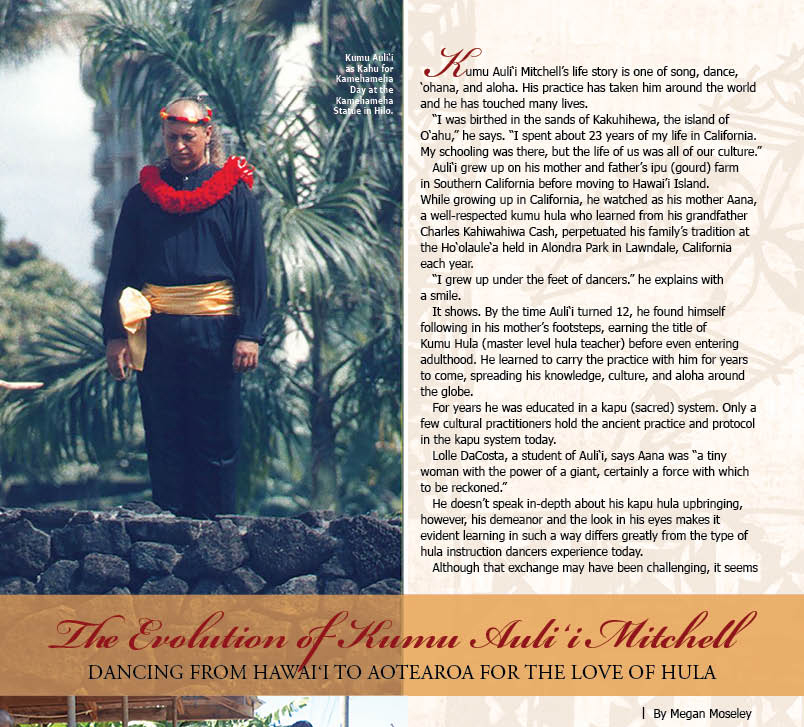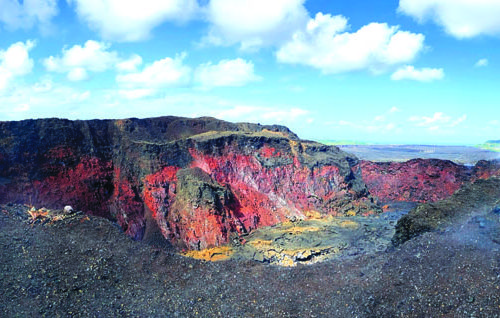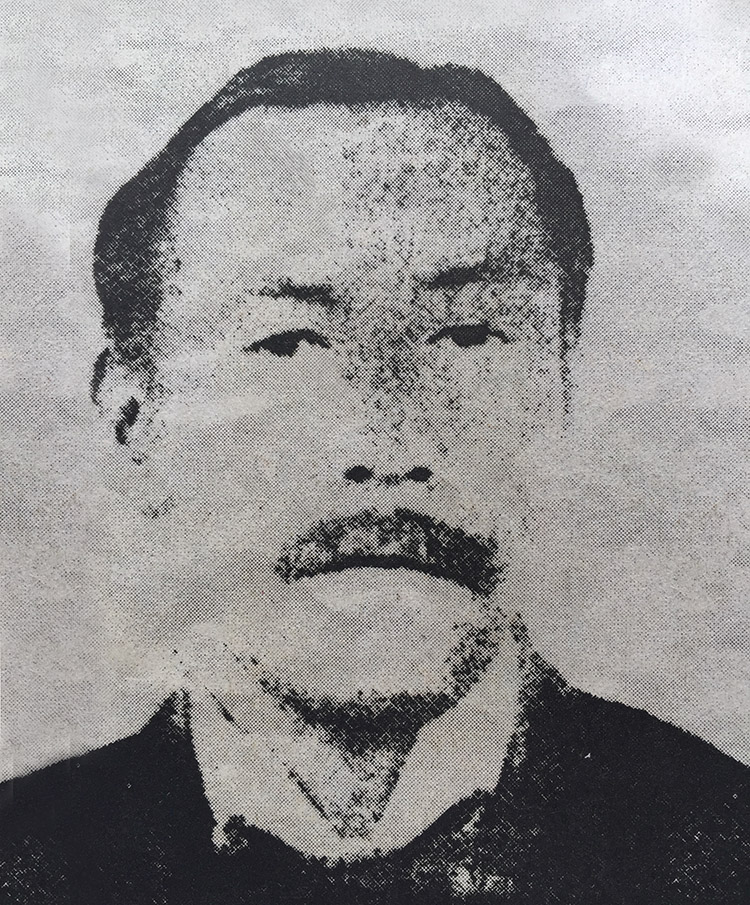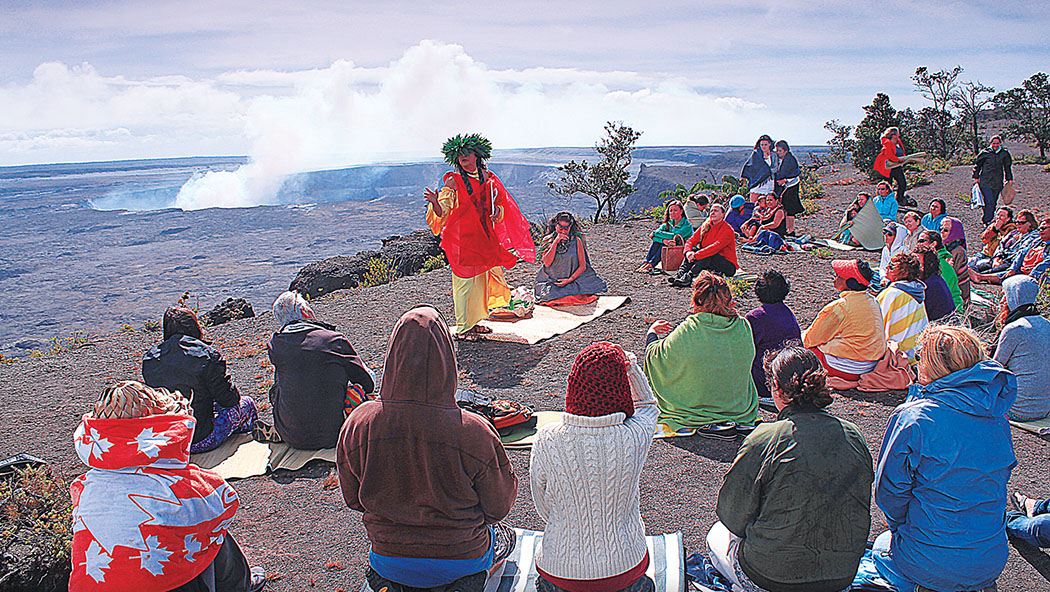
The Evolution of Kumu Auli‘i Mitchell: Dancing from Hawai‘i to Aotearoa for the Love of Hula
By Megan Moseley
Kumu Auli‘i Mitchell’s life story is one of song, dance, ‘ohana, and aloha. His practice has taken him around the world and he has touched many lives.
“I was birthed in the sands of Kakuhihewa, the island of O‘ahu,” he says. “I spent about 23 years of my life in California. My schooling was there, but the life of us was all of our culture.”
Auli‘i grew up on his mother and father’s ipu (gourd) farm in Southern California before moving to Hawai’i Island.
While growing up in California, he watched as his mother Aana, a well-respected kumu hula who learned from his grandfather Charles Kahiwahiwa Cash, perpetuated his family’s tradition at the Ho‘olaule‘a held in Alondra Park in Lawndale, California each year.
“I grew up under the feet of dancers.” he explains with a smile.
It shows. By the time Auli‘i turned 12, he found himself following in his mother’s footsteps, earning the title of Kumu Hula (master level hula teacher) before even entering adulthood. He learned to carry the practice with him for years to come, spreading his knowledge, culture, and aloha around the globe.

For years he was educated in a kapu (sacred) system. Only a few cultural practitioners hold the ancient practice and protocol in the kapu system today.
Lolle DaCosta, a student of Auli‘i, says Aana was “a tiny woman with the power of a giant, certainly a force with which to be reckoned.”
He doesn’t speak in-depth about his kapu hula upbringing, however, his demeanor and the look in his eyes makes it evident learning in such a way differs greatly from the type of hula instruction dancers experience today.
Although that exchange may have been challenging, it seems to have molded Auli‘i in many ways.
“I can hardly put it into words. One time we were sitting in the audience during a performance when his mother called out, chanting to her son and he chanted back as he made his way to her. You could feel the energy of generations pass between them. It was a ‘chicken skin’ moment. The air was vibrating from it,” Lolle says.
Auli‘i has continued their legacy of the hula ‘olapa (dance) through three hālau (hula schools), and now at 55-years-old, his journey as a kumu hula has him sharing his practice with dancers as far away as Aotearoa (New Zealand).
The Evolution of Auli‘i
After years of instructing a hālau on Hawai‘i Island, Auli‘i decided to pursue a different path. In 2014, he was invited to attend a master’s degree program in applied indigenous knowledge at the Māori institution Te Wānanga O Aotearoa.
There, Auli‘i became the first, and only, international student to enter the program that honored indigenous peoples’ roots and knowledge in a very profound way. Those selected were handpicked based on their decades of knowledge.
“You could not simply apply, you had to be recommended via your community,” he explains. “My support letters had to come from those who have witnessed my family’s tradition.”
There were 40 people participating in the cohort. Most had a Māori background, and one was from Tonga.
Auli‘i studied under the program of “He Waka Hiringa,” He Waka (the canoe) and Hiringa (the inner desire).
Auli‘i says he entered the program as the tuakana (eldest sibling) of the Māori people. (Based off their ancestry, the Polynesians first arrived in Hawai‘i then to Aotearoa. This is what Auli‘i means when he describes being the eldest sibling of the Māori).
However, when he left, Auli‘i says he felt more like the teina (younger sibling), admitting he learned more about their culture and practices than vice versa.
Throughout their studies, the students learned to respect and celebrate their differences as a well as their similarities. Auli‘i says he also began to delve deeper into how Hawaiian culture and Polynesian culture supported and compared to more western styles of science—social and otherwise.
For the past 13 years, Auli‘i has been working as a cultural anthropologist and specialist in the disciplines of archaeological and cultural impact studies, with a primary focus on Hawai‘i.
He currently works as a Cultural Project Anthropologist for Cultural Surveys Hawai‘i.
Through this master’s program, he began to reflect upon the Hawaiian way of knowing compared to western philosophies. Using the Kumulipo (the Hawaiian creation chant) as an example, Auli‘i says Hawaiians have been anthropologists for many, many years, they just didn’t have a title.
In his discipline of archeology, he says the very act of radiocarbon dating can be compared to Hawaiian mo‘o kū‘auhau (genealogy).
“We can trace our lineage and use that to tell who we were and where we were at certain times in our history. These are comparable methodologies,” he says.
The program encouraged this type of critical thinking, and Auli‘i and his peers were able to use their own ancestral knowledge as research.
“We were allowed to use the stories of our elders as references and even our dreams as references,” he says. “And we began to recognize that our own knowing was our own theory and found it hard for western theory to support our own knowing.”
The students were also asked to focus on how they experienced transformation of ‘ohana and community through an applied cultural practice. Naturally, Auli‘i chose hula. However, it wasn’t until his second year that he was able to find the inspiration he needed to write his exegesis.
A year into the program, Auli‘i was still searching for the answer to how hula had transformed his community and ‘ohana. The answer finally came to him one night while attending a dinner with his cousin and the U.S. Ambassador. Serendipitously, the ambassador approached Auli‘i and his cousin and asked them to assist him with creating an authentic Hawaiian Village for their annual Pasifika Festival, the largest Polynesian festival in the world. Auli‘i didn’t hesitate to commit.
Eventually, his participation in planning and coordinating the event led him to Amo Ieriko and his wife Maile Giffin. Auli‘i describes them as “true entertainers,” and was pleased to learn about their deep interest in all types of Polynesian dancing.
They later joined Auli‘i’s new hālau, Hālau O Moana Nui a Kiwa of Aotearoa. Pasifika Festival’s Hawaiian Village genuinely reflects Hawaiian culture.
“Auli‘i was instrumental in creating that authentic culture, not only in music and dance but also in arts and crafts, and food,” Amo says.
As the popularity of the Hawaiian Village has grown over the years, so has the hālau. Auli‘i currently trains 25 dancers and recently led them to the King Kamehameha competition on O‘ahu.
His experience meeting Amo and Maile, starting the hālau, and finding a new ‘ohana in Aotearoa, gave him what he needed to complete his research.
He describes the process as incredibly humbling.
“They opened my eyes and my world to share my generations’ of knowledge,” he says.
Through this progression, Auli‘i realized what he was experiencing was truly similar to what his mother experienced teaching dance in California. His life had finally come full circle.
“The Hawaiians of California, they really honored it and were serious about learning it and it was not taken for granted at all. It was really cared for and nurtured. I found the same thing in Aotearoa,” he says.
The Kumu Auli‘i
Almost anyone who knows Auli‘i, will say he’s compassionate, kind, full of aloha, and one strict kumu.
“He’s no nonsense. Don’t muck around,” Maile says. “If he was correcting you, he would always say it with love and with aloha, but he would absolutely tell you what you have done as a dancer.”
That being said, everyone still adores him. “Everyone is very close to him,” Maile says.
His student Lolle agrees. She says his devotion to the dance encompassed his life and even helped change her understanding of the world around her.
“I learned that respect for all things permeated all life activities, the importance of beginning with chants, asking permission to gather, listening, and stilling yourself to wait for a response to proceed. I was fascinated with the timelessness and privilege of the gifts that he shared with me. I learned patience and humility,” she says.
While hula has been his life’s passion, the kumu has also pursued other works to support him spiritually, culturally, and financially.
“We never charged for hula,” he explains. “It was truly our practice. So I had to find a job and career that would make my practice live.”
That’s how Auli‘i found the field of anthropology. He graduated in 2003, when the islands were being opened up to heavy development and later joined an archeological team as the cultural expert to assist with preservation efforts, which he still does today. He currently works with developers to provide assistance and understanding regarding Hawaiian culture.
“We’re able to help them tune into the mo‘olelo of the oral traditions, and myths, and legends of our people connected to certain places,” he explains.
He is a member of the O‘ahu Island Burial Council which advocates for the recognition of lineal and cultural descendants and the determination of the iwi kūpuna, or cultural remains, of his ancestors.
Auli‘i says he enjoys his profession, yet there are times when his job description and cultural identity may clash.
“As Hawaiians, we ho‘onana, we don’t ask questions.” he says. “For us it’s difficult, because if we don’t ask questions we don’t get the keys to our own sites, and we need to be there. We have to be there.”
That has been part of Auli‘i’s mission. He’s worked to preserve environmental and archeological sites throughout the islands and also Hawaiian education by teaching at Kua O Ka Lā New Century Public Charter School in Puna and acting as president and co-founder of Ho‘oulu Lāhui.
It’s apparent that Auli‘i continues to protect Hawaiian culture, whether that be through education, dance, or environmental assessments. He is a true kumu who can teach us all a little something about life.
“My advice would be to learn something good enough to teach it. And give it away. Share it with everyone, any chance you get.” ❖
Contact writer Megan Moseley



